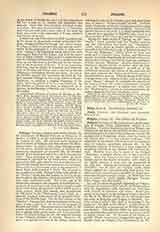

Folengo, TEOFILO, Italian poet, better known by his pseudonym of MERLIN COCCALO or COCAI; b. at Mantua in 1496; d. at the monastery of Santa Croce in Campese in 1544. He received some training at the University of Bologna and then entered the Benedictine Order. In 1524 or 1525, either through enmity for his abbot, Ignazio Squarcialupi, or because of a temporary impatience of monastic life, he divested himself of the habit and acted for a while as a private tutor. Then repenting of the step taken, he made overtures to his order for his readmission, which was granted in 1534, only after he had done penance and had cleared himself of certain suspicions of heterodoxy. Three years later he became prior of the monastery of Santa Maria delle Ciambre in Sicily. He returned to the mainland in 1543. Folengo’s fame rests chiefly on his “Baldus” which was first printed in 1517 in seventeen books_ or Macaronicce, and was reprinted in 1521 with additional books. The epic in its tendencies, belongs to the category of burlesque compositions in macaronic verse (that is in a jargon, made up of Latin words mingled with Italian words, given a Latin aspect), which had already been inaugurated by Tifi Odasi in his “Macaronea”, and which, in a measure, marks a continuance of the goliardic traditions of the Middle Ages. For the first edition of the “Baldus”, Folengo had derived burlesque traits and types of personages from the chivalrous romances of Boiardo and Pulci. His second edition reveals, in the greater amplitude of its action, in the improved manner of setting forth comic types, and in its generally better developed feeling for art, the author’s reading of the “Orlando Furioso” of Ariosto. However, the poem is a parody not only of the Italian chivalrous romance but also of the Virgilian epic, and, in its latter part, of Dante’s “Divine Comedy” as well. Furthermore, it is grossly satirical in its treatment of the clergy and at times borders on the sacrilegious. In view of the general nature of the work, it is easily intelligible that it should have appealed to Rabelais, who found in it the prototype of his “Panurge” and his “Gargantua”.
Among the lesser works of Folengo are the “Zanitonella”, which parodies both the Virgilian pastoral and the Petrarchian love-lyric; the “Orlandino” (1526), which gives in Italian octaves a burlesque account of the birth and youth of Roland; the curious “Caos del Triperuno” (1527), which in verse and prose and in mingled Latin, Italian, and Macaronic speech, sets forth allegorically the author’s own previous heretical leanings and finally states his confession of faith; and the “Moschaea”, which in three books of Macaronic distichs relates, somewhat after the fashion of the “Batrachiomachia”, as well as of the chivalrous romances, the victory of the ants over the flies, and preludes the Italian mock-heroic poem of the seventeenth century. After his return to his order, Folengo wrote only religious works, such as the Latin poem “Janus”, wherein he expresses his repentance for having written his earlier venturesome compositions; the “Palermitana”, in Italian terza rima; and the “Hagiomachia”, which, in Latin hexameters, describes especially the lives of eighteen saints.
J. D. M. FORD

